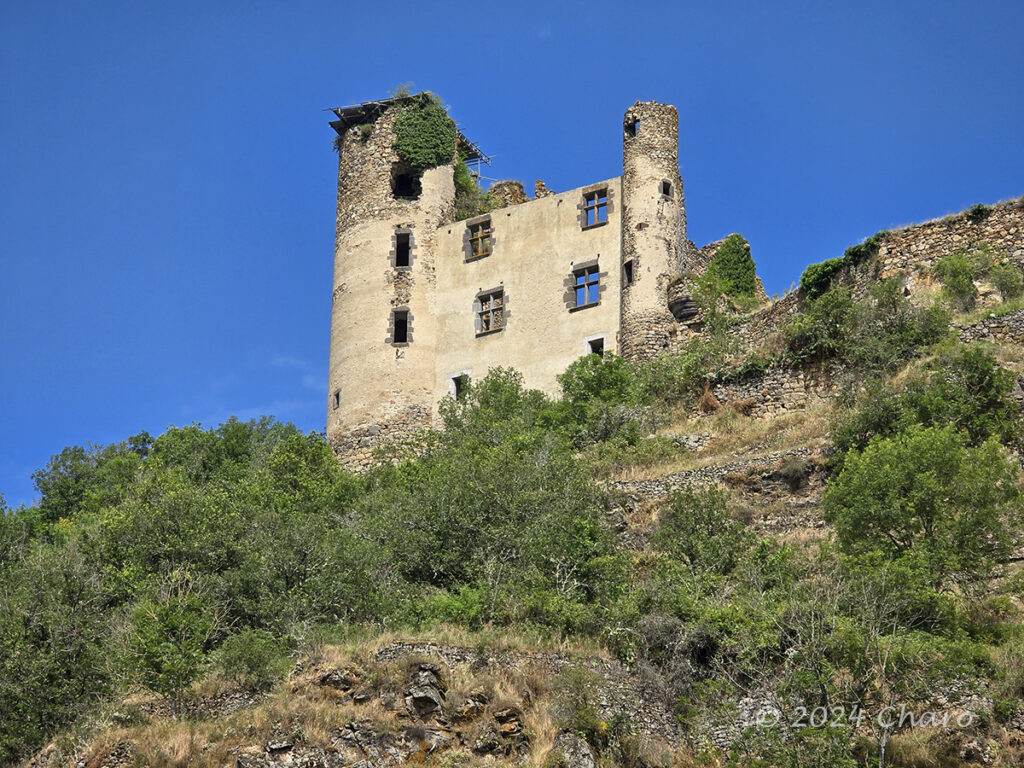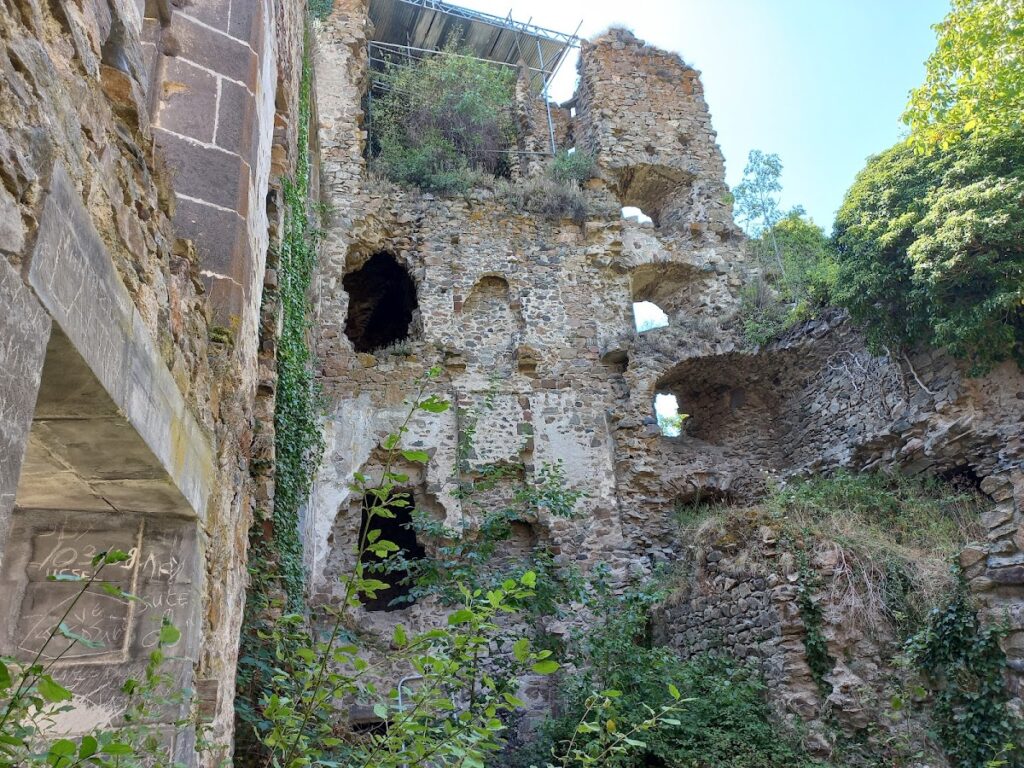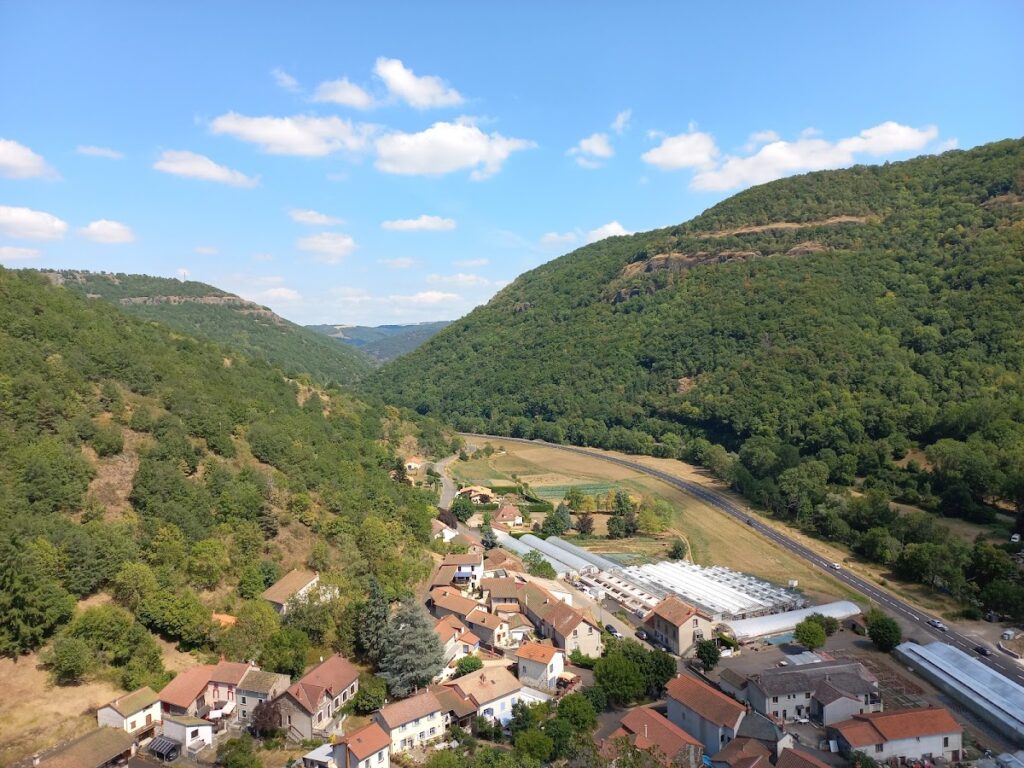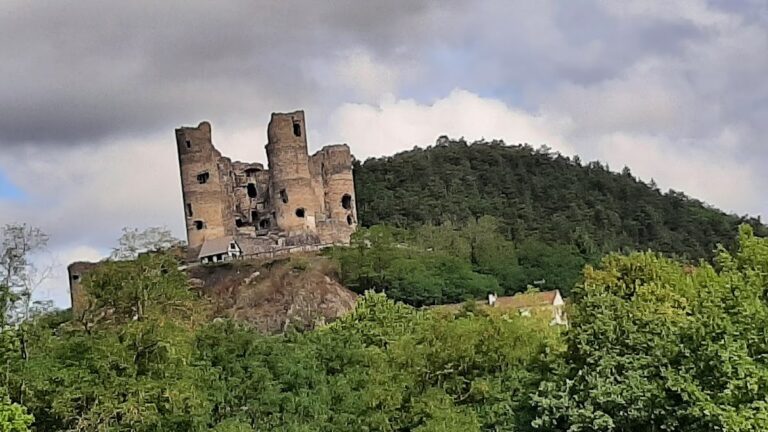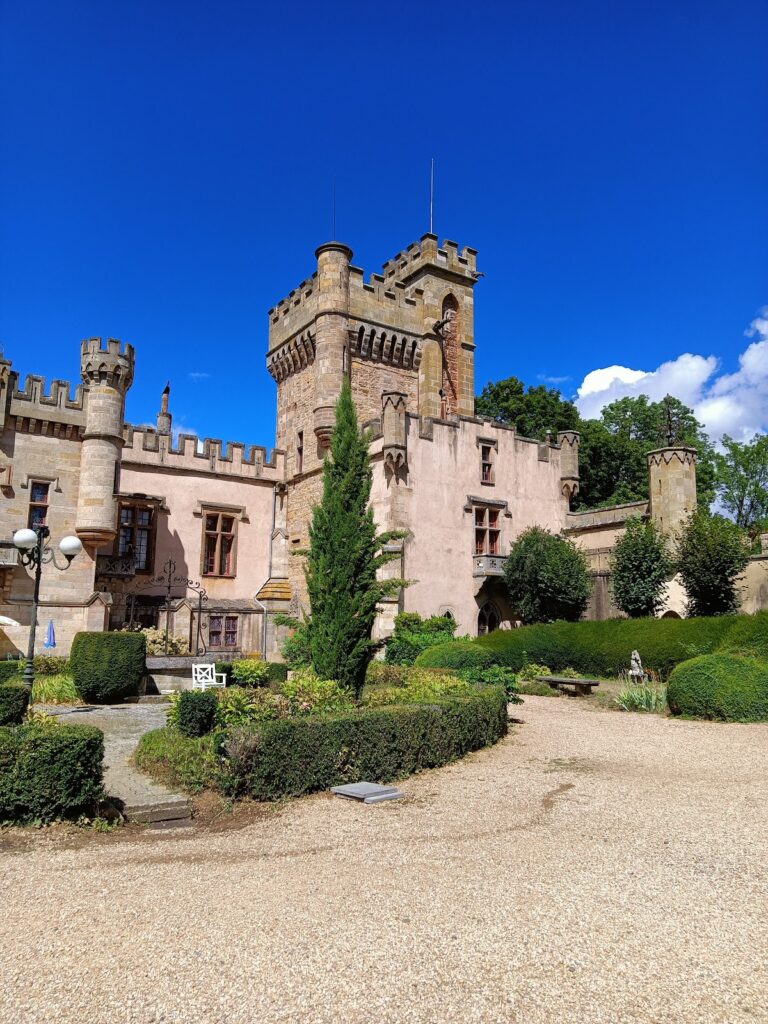Château d’Aurouze: A Medieval Fortress in Molompize, France
Visitor Information
Google Rating: 4.4
Popularity: Very Low
Google Maps: View on Google Maps
Country: France
Civilization: Unclassified
Remains: Military
History
The Château d’Aurouze stands above the village of Aurouze in the commune of Molompize, France. This medieval fortress was established by the local nobility during the early 14th century, reflecting the feudal society and political dynamics of that era.
Construction of the castle commenced in 1309 following permission granted by King Philippe le Bel to Bertrand de Rochefort d’Aurouze, the local lord. The Rochefort family had held influence in the region since at least the late 13th century, as shown by transactions in 1295 involving Bertrand de Rochefort and the Saint Germain family. Over the following decades, the castle changed hands several times among noble families. The Lastic lineage owned it until 1383, when Aymerigot Marchès, an outlaw aligned with English forces during the Hundred Years’ War, seized it and used the fortress as a base for his raids.
In the year after Marchès’ acquisition, Jean III d’Armagnac purchased Château d’Aurouze and later transferred ownership to Jean de Courcelles. The Courcelles family retained control through much of the 15th century; among them, Louis II de Courcelles served as the royal bailli, or administrative judge, overseeing the mountainous areas of Auvergne under King Charles VII. When Louis II died without heirs, King Louis XI confiscated the fortress and its lands, awarding them to Jean d’Urfé. The property subsequently passed to Jean’s descendants, including François d’Urfé, who died in 1525, and Anne d’Urfé. Anne’s marriage to Gaspard de Bouillé du Charriol connected the castle to a noble family with roots in the region stretching back to the 11th century.
Later, Rose de Lignerac, widow of François de Bouillé, lost ownership of the castle to the La Vernède family. During the upheavals of the French Revolution, the property was acquired by the Gillet d’Auriac family. Around this time, the castle suffered burning and looting, which contributed to its ruination. In the 20th century, preservation efforts spearheaded by Georges de Bussac and Jean Rieuf secured official recognition for the site. The castle was designated as a protected historic monument in 1968 and formally listed in 1972, ensuring its legacy within France’s cultural heritage.
Remains
The remnants of Château d’Aurouze occupy a prominent rocky outcrop overlooking the village below. The fortress’s layout reflects medieval military architecture, combining defensive and residential elements in a hilltop setting. From the remains, the main façade is understood to have been imposing and tall, featuring windows divided by both vertical stone bars (mullions) and horizontal crosspieces (transoms), allowing light while maintaining fortification.
Flanking this principal front were two significant defensive structures: a donjon, or keep, which served as the strongest defensive tower and final refuge during attacks, and a smaller turret. These elements concluded in a terrace shaped like a spur, likely allowing strategic views and defense of the surrounding landscape. Construction involved robust stonework, as evidenced by the surviving sculpted keystone set above an entrance or arch. This carved piece displays a quartered coat of arms combining symbols from three noble houses: diamonds representing Rochefort d’Aurouze, fusées (diamond-shaped charges arranged horizontally) for Courcelles, and shells associated with the Orlhac family. Such heraldry highlights the castle’s connections to regional aristocracy.
Within the ruins, traces of a large hall once remained identifiable about fifty years ago. This space contained heraldic decorations, including the helmet insignia of the Bouillé family and shields bearing the coats of arms of Rochefort d’Aurouze, Astorg d’Orlhac, and Courcelles families. These embellishments suggest the castle served as a noble residence where lineage and alliances were visually asserted through symbolic stone carvings.
Today, the Château d’Aurouze is preserved as archaeological ruins, with these structural features remaining in situ. Although the interiors no longer stand intact, the combination of architectural fragments and heraldic sculpture provides valuable insight into the castle’s historical ownership and design. The site’s elevated position and sturdy stone construction remain testament to its role within medieval feudal defense and administration in this part of France.
